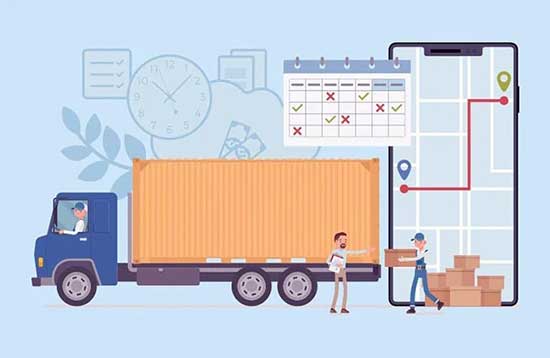
Technology serves as a differentiator for LSPs
Published :

This article was first published in CargoTalk on February 11, 2021.
Logistics service providers need a differentiator to elevate their business beyond just a sustainable model. Technology serves as that differentiator that goes beyond day-to-day operations and helps logistics service providers across different dimensions that include using technology as a medium to increase revenue, improve real-time visibility, elevate business growth, optimise operations, make swift business decisions and go beyond UI-based solutions. By analysing each of the above with respect to the individual business needs, we can expect the following trends to help them achieve critical objectives.
Integrated solutions
To win new deals and retain existing customers, logistics service providers need to move from an assurance-based model to technology-driven engagements with their customers. An integrated solution will help them provide complete command over the entire operations, thereby helping them to operate, optimise, and automate processes. A command centre of operations helps them understand where their resources are spent, how better they could be optimised to improve the cost of operations and profit margins.
Mobility solutions to ease friction
2021 will be a year where mobility moves from being an innovative trend to a practical application by easing the friction among operations. These mobility solutions will be needed for most common processes such as booking request creations, approvals, invoices, alerts, proof of deliveries, routes, picking, put away, and more.
Location and navigation intelligence
One of the critical aspects where technology investment will focus this year will be on location and navigation intelligence. Starting with a simple track and trace, visibility in logistics would take multiple dimensions to provide much-needed information on where the goods are transported, stored, ETAs, weather patterns, and more. Latest planning solutions use maps to give the complete picture of each planned trip to enhance the overall customer experience.
Emergence of Practical Data Science through AI & ML
The benefits of having an integrated solution will enable logistics service providers to collect data on an enormous scale, which can be enriched to improve operational efficiency. We can expect logistics service providers to embark upon multiple data science initiatives in terms of warehouse re-slotting, pick and put away strategies, trip planning, reducing manual data entry, anomaly detection in invoices, and more. These data science initiatives will help logistics organisations to overcome the competition in the market, helping them win new deals and expand the business.
Predictive analytics
As logistics service providers enrich data, they can transform themselves from being a reactive organisation into a proactive one. Demand prediction on a peak season, understanding the shelf-life of a product in a retail store for replenishment, and capacity acquisition to manage demand can be critical areas where predictive analytics can help logistics service providers reduce costs and improve their profit margins.
Visibility
In logistics industry, providing real-time and more compatible visibility is a powerful tool through which warehouse/ hub operational planning will be improved. Visibility plays a key role in helping logistics service providers to have real-time updates about their orders. Visibility can be extended to customers through which they can keep track of their orders. This also strengthens the relation with customers.
Overall, there are multiple ways in which logistics service providers could use the technology. When it comes to technology, engaging the right partners to enable the technology-driven solution is always critical and provides the leading business edge. Technology supported business becomes more flexible and becomes a strategy making option and in turn helps in the business side contribution.
Enterprise asset management (EAM) involves the management of mission critical assets of an organization throughout each asset's lifecycle. EAM is used to plan, optimize, execute, and track the needed maintenance activities with the associated priorities, skills, materials, tools, and information. The aim is to optimize the quality and utilization of assets throughout their lifecycle, increase productive uptime and reduce operational costs.
Enterprise asset management (EAM) involves the management of the maintenance of physical assets of an organization throughout each asset's lifecycle. EAM is used to plan, optimize, execute, and track the needed maintenance activities with the associated priorities, skills, materials, tools, and information.
The software helps in effective maintenance of assets through preventive, predictive, shutdown and breakdown maintenance strategies. The system also helps enterprises mitigate equipment risks by enhanced safety standards. The streamlined operations and improved asset performance helps organizations increase their investment effectiveness.
EAM is important because it helps organizations track, assess, manage and optimize asset quality and reliability. Asset intensive Organizations have hundreds, thousands, even millions of assets which needs to be maintained to maximize / optimize life of these assets to increase the return on investment.
The key features of effective EAM are:
Asset Intensive companies under the following Industries :
Contact us for a meeting and schedule a demo
This differs on case to case basis, based on the type of installation and unique industry specific requirements. Contact us for a meeting and schedule a demo.
This differs on case to case basis, based on the type of installation and unique industry specific requirements. Contact us for a meeting and schedule a demo.
Stay Connected, follow us on LinkedIn / Twitter to know more about EAM Software latest trends.

All Rights Reserved. © Copyright 2024. Ramco Systems.